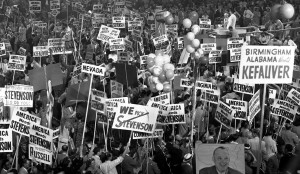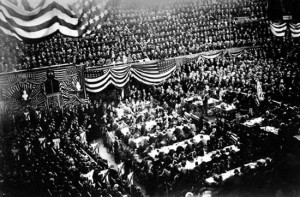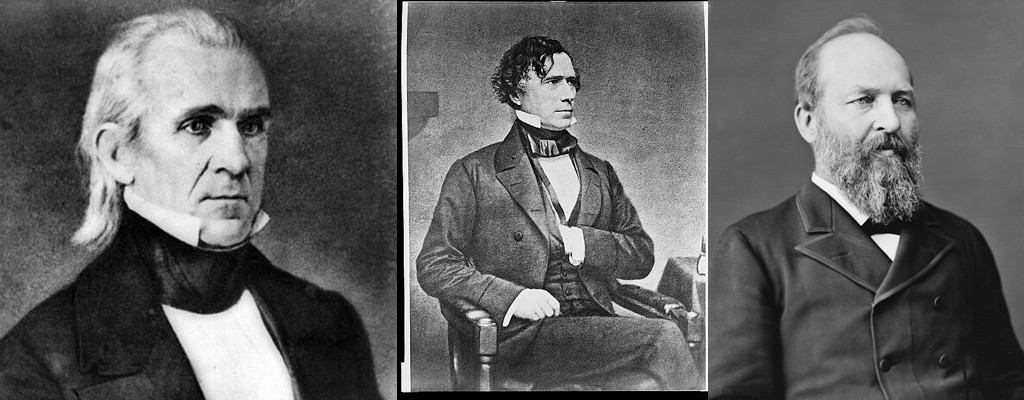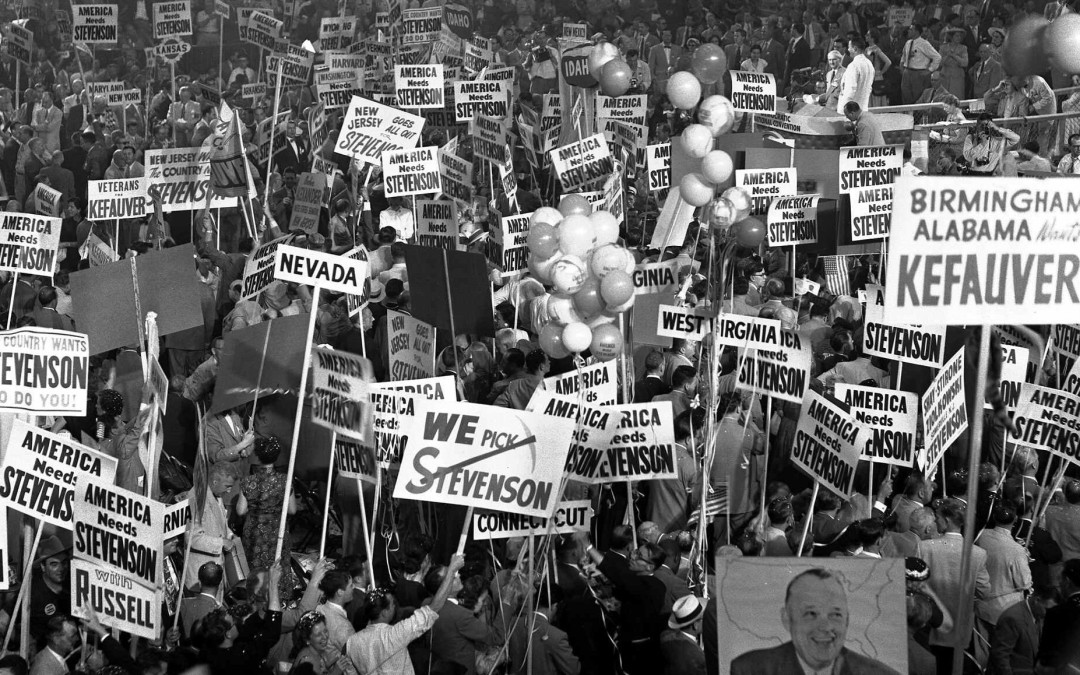It’s certainly not unheard of in our nation’s history that a presidential front runner has been disappointed and lost the nomination after a contested or brokered convention with multiple convention ballots. Just because a candidate enters a convention with more delegates than any other candidate does not guarantee that they will emerge victorious as the nominee of their party. 
When was the last contested convention? There has not been a contested or brokered convention in 64 years when Democratic candidate Adlai Stevenson won the nomination on the third ballot. On the first ballot, Stevenson came in second to Estes Kefauver who led over Stevenson by 67 votes. By the time Stevenson cinched the nomination, he had 342 more votes than Kefauver. On the Republican side, the last contested convention was in 1948 when Thomas Dewey won on the third ballot. But unlike the 1952 convention, Dewey had the most votes on the first ballot, but just not enough for the nomination until the third ballot.
How many contested conventions have there been? Even though contested conventions have not been part of the presidential nomination process for more than a half century, they have been a very common part of our history. There have been at least 28 contested conventions of major parties in which no candidate won the nomination on the first ballot. The number of ballots necessary has ranged from two all the way up to a record 103 in 1924 to select the Democratic nominee John W. Davis. In 1860, after 57 ballots, the Democratic convention was still unable to agree to a nominee so they adjourned for a month and a half and reconvened, at which time they selected Stephen A. Douglas on the second ballot.
When did the contested conventions occur? A total of 19 of the contested conventions occurred in the 19th century. With the increased use of primaries and caucuses to select delegates to the national conventions, brokered conventions became less common in the 20th century, with just eight such cases occurring between 1912 and 1952.
How often has the first ballot victor lost the nomination? Of the 28 contested conventions, there have been 17 times where a major party presidential candidate who received the most number of votes on the first convention ballot (but did not receive the required number for the nomination), was ultimately not the selected nominee. So even though they started the convention with more support than any other candidate, the front runner was denied the nomination. Examples include the following:
- Henry Clay in 1839
- William Seward in 1860
- Charles Francis Adams in 1868
- James Blaine in 1876
- John Sherman in 1888
- William Gibbs McAdoo in 1920 and 1924
- Thomas Dewey in 1940
No 1st ballot votes: In three instances, the eventual nominee in a contested convention did not even receive any votes on the first ballot.
- First votes on 8th ballot: In 1844, James Polk emerged as the Democratic Party nominee after nine ballots, beating out former President Martin Van Buren who was gunning for a comeback bid after four years out of the White House. Van Buren had more votes than any other candidate on the first ballot. Polk didn’t receive any delegate votes until the eighth ballot, thus marking him as the first true “dark horse” presidential candidate. He went on to win the election.
- First votes on 35th ballot: It took the Democratic Party a total of 49 ballots at their 1852 convention in Baltimore before they unanimously selected Franklin Pierce as their nominee. Pierce received his first vote on the 35th ballot. Front runner Lewis Cass, who received 116 first ballot votes, was the choice of just two delegates by the time the 49th ballot rolled around. During the extended voting, Cass traded first place position with James Buchanan, Stephen A. Douglas, and William L. Marcy. Ultimately Cass, Buchanan, Douglas, and Marcy were all relegated to the sidelines as Pierce picked up almost unanimous support on the 49th ballot with 282 votes and only seven votes for a smattering of other candidates.
- First votes on 2nd ballot: In 1880, James Garfield was finally nominated on the 36th ballot. The main contenders for the Republican nomination were former president Ulysses S. Grant (bidding for an unprecedented third term), Maine Senator James G. Blaine, and Ohio Senator John Sherman. On the second ballot, Garfield received one vote. Between the second and 33rd ballot his vote was either zero, one, or two. On the 34th ballot, he got 17 votes, that increased to 50 on the 35th ballot, followed by a sudden rush to him as a compromise candidate on the 36th ballot with 399 votes, enough to win the nomination.

James Polk, Franklin Pierce, James Garfield


 Facebook
Facebook
 Twitter
Twitter
 LinkedIn
LinkedIn
 YouTube
YouTube
 Pinterest
Pinterest